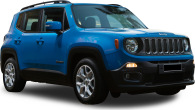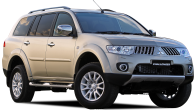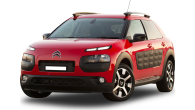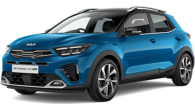Rock climbing without ropes, talcum powder or funny little shoes, but with Daryl Braithwaite blasting on Spotify and the climate control maintaining a chilled cabin despite half the roof being removed.
This is the new JL Wrangler Rubicon in a nutshell, doing what it does best along its namesake, the legendary Rubicon Trail, in California.
It's a full nine months since the covers were whipped off the first new Wrangler in more than a decade in LA, and it could be another seven before it hits local showrooms. US deliveries started in early 2018, but this is the first time media outside its mother country have had the opportunity to put it through its paces.
The Australian line-up is expected to continue with a choice of three trim levels in two- or four-door versions, but note that all the launch cars tested on launch were the most off-road focused Rubicon trim level, with the petrol V6.
We'll therefore have to wait until the Australian launch to test the lesser Sport and Overland trim levels and the new 2.2-litre turbo-diesel also expected for down under.
Jeep Wrangler 2019: Sport (4x4)
| Engine Type | V6, 3.6L |
|---|---|
| Fuel Type | Unleaded Petrol |
| Fuel Efficiency | 11.2L/100km (combined) |
| Seating | 4 |
| Price From | $29,150 - $35,090 |
| Safety Rating |
|
Is there anything interesting about its design?
9 / 10
Given it took more than a decade to develop the new Wrangler, you'd certainly hope the result had better off-road ability, fuel efficiency, power, tech, refinement, and also lost a few kilos.
The new JL is also a lot safer too, but somehow it stays true to its core values after what's arguably the most comprehensive redesign in its 77-year evolution.
The most fundamental surprise is its continuation of solid axles and coil springs front and rear to maximise off-road articulation.
Solid front axles are notoriously difficult to tune for on-road dynamics, and even the Mercedes G-Class has now thrown in the towel for an independent front end.
Other big surprises include the removable doors, fold-down flat glass windscreen, which are now much easier to enact than before thanks to the on-board tool kit. The bolt count for lowering the windscreen has dropped from 28 to just four.
The all new ladder frame chassis has scored longer wheelbases to accommodate the bigger eight-speed ZF auto, with the two door growing 34mm to 2458mm and the four door by 60mm to 3007mm.
Rather than the traditional all-steel construction, the JL uses lighter aluminium for the doors, hinges, fenders, windscreen frame, and tailgate skin, with the latter also boasting a magnesium frame.
Watch our 2018 Wrangler walkaround video with Senior Designer Steve Goodrich
[[{"fid":"128102","view_mode":"default","fields":{"format":"default","field_caption[und][0][value]":"","media[field_video_poster_und_0]":"","field_video_poster[und][0][fid]":"0","field_video_poster[und][0][display]":"1","field_folder[und]":"1","field_categories[und]":"_none","field_car_make[und][0][value]":"","field_car_model[und][0][value]":""},"type":"media","field_deltas":{"1":{"format":"default","field_caption[und][0][value]":"","media[field_video_poster_und_0]":"","field_video_poster[und][0][fid]":"0","field_video_poster[und][0][display]":"1","field_folder[und]":"1","field_categories[und]":"_none","field_car_make[und][0][value]":"","field_car_model[und][0][value]":""}},"attributes":{"class":"media-element file-default","data-delta":"1"}}]]
Further weight-saving measures include hollow track and stabiliser suspension bars, aluminium engine mounts and steering gear, and a lighter brake master cylinder. Net savings are up to 90kg, with US-spec 3.6-litre auto Rubicons now weighing 1880kg in two-door form, and 2021kg as the four door.
The characteristic external bonnet latches are also back, but have been redesigned and moved closer to the front of the car to meet pedestrian safety requirements. They also now feature a winch cable retention slot to help with off-road recovery situations.
The windscreen has been delicately laid back to improve aerodynamics without spoiling the Wrangler look, which among numerous other detail changes has netted a nine per cent improvement to a still brick-like 0.54 Cd.
All other windows have been enlarged and the spare tyre mounted lower to improve passenger visibility.
Emphasising the level of nerd among the Jeep design team, the LED headlight internals have been styled to reference the electrobinoculars from the original Star Wars trilogy.
Those vents ahead of the doors are functional, and they’re tasked with reducing under-bonnet air pressure at speed. The Rubicon’s bonnet vents are also real, and their job is to extract heat during lengthy low-speed off-road climbs – like the Rubicon Trail. On that note, the Rubicon now carries a competitive 760mm wading depth rating.
Overall clearance has also been improved, with the Rubicon boasting a 44-degree approach angle (up 11), 27.8deg breakover (up 5.8) [for the two door] and 37deg departure angle (up 9), with 277mm of ground clearance and 200mm of articulation.
There are now three roof options to choose from, with the standard soft top and optional hard top now joined by the Sky One-Touch powertop, which will fold its soft centre section back to open the whole roof turret at the touch of a button.
The Wrangler's interior is another design highlight, as it retains a classic Jeep ruggedness, but features a bunch of good quality, adventure-themed rubberised textures, and amazingly retains all the important mod cons.
The fourth-generation Uconnect multimedia system is available in 5.0-, 7.0- and 8.4-inch screen sizes depending on trim level, and hides the USB and 3.5mm connections behind an O-ringed flap.
How practical is the space inside?
8 / 10
The Wrangler has never been particularly focused on passenger comfort or practicality, but the JL makes big strides in every important direction.
Up front, the centre console thoughtfully features a rubberised gap between the cup holders for your mobile phone. This is handy at the best of times, but downright essential when you're bouncing the car off boulders.
Rather than bottle holders, there are flexible nets in each door for storing bottles and more and the glove box is a useful size.
There's acres of headroom and the back seat of the four-door is also a decent place to be, with heaps of room for my 172cm height behind my driving position. The much shorter wheelbase tightens things up to render it almost kids-only, and it loses the centre seat because its nestled within the rear wheelarches.
Both bodystyles score directional air vents in the back of the centre console, along with USB ports and an inverter - in the Rubicons tested at least.
The back seat cushion is on the flatter side and the backrest is more dual-cab ute than SUV with its upright angle, but it’s not terrible and all versions score two ISOFIX child seat mounts in the outward positions.
The boot is the same size between two- and four-door, with US-spec models measuring 898 litres (SAE) with the seats up, and 2050L with the rear seat folded. We assume these figures are the total cabin volume from floor to roof.

Does it represent good value for the price? What features does it come with?
8 / 10
Jeep Australia is yet to confirm local pricing, but the new JL isn't expected to stray too far from the current $38,990-$53,990 spread across two and four-door versions.
We can tell you that Apple CarPlay and Android Auto will appear for the first time, which is how we accessed the aforementioned Daryl Braithwaite on the Rubicon Trail.
The Wrangler Rubicons we tested also had leather seats and climate control, but what really makes them deserving of the badge is an extra inch of suspension travel, bigger, chunkier tyres, relocated wheelarches for more clearance, and stronger axles with front and rear diff locks and swaybar disconnects. Australian Rubicons are set to ride on one inch smaller 32-inch mud terrain tyres and forego the unique wheelarches fitted to US versions, however.
Our score here is based on the assumption that pricing will remain similar to the current model, and spec levels are close to the US versions.
What are the key stats for the engine and transmission?
7 / 10
The Australian drivetrain options are yet to be finalised, but bank on the V6 petrol and 2.2-litre diesel rather than the 2.0-litre petrol turbo and 3.0-litre diesel V6 also available internationally.
Jeep describes the petrol V6 as ‘revised’, but the only changes mentioned in the press material is an extra 6Nm of torque, and the addition of stop/start. Power is the same 209kW and torque now totals 353Nm.
The auto steps up to the familiar eight-speed unit from the Grand Cherokee
The new 2.2-litre turbo-diesel is set to replace the existing 2.8-litre unit, and features a variable geometry turbo to produce 150kW and 450Nm (up 3kW, but down 10Nm), with max torque available from 2000rpm.
The auto steps up to the familiar eight-speed ZF torque converter unit from the Grand Cherokee (and plenty of other longitudinal-configured models across the market) and automatic Rubicons feature an excellent 77.2:1 crawl ratio tailored for tackling challenges just like the Rubicon Trail. The transfer case is still controlled via a stubby lever next to the auto selector.
A six-speed manual is available with the V6, but it’s still unclear whether Australia will retain the option.
How much fuel does it consume?
7 / 10
Given Australian drivetrains are yet to be finalised, so are official fuel consumption figures.
With the JL’s addition of stop/start, the extra three transmission ratios and the lighter, more aerodynamic body, the official combined figure is likely to improve on the current 3.6-litre four-door Rubicon’s 11.9L/100km figure.
Our drive started with a 40km road drive to the McKinney Rd entry to the Rubicon, and after the 19km first half of our trail drive and about eight hours running time (stop start is deactivated in low range) the Wranglers we drove had used less than half a tank (70L two-door, 81L four-door) of petrol. Not bad for a big V6 in a car that still weighs about two tonnes.
Warranty & Safety Rating
What safety equipment is fitted? What safety rating?
8 / 10
FCA Australia and Jeep Asia Pacific boss, Steve Zanlunghi, has confirmed that all Australian Wranglers will have AEB (auto emergency braking), and will be aiming for the highest safety rating available.
A five-star Wrangler? Perhaps, with the likes of the Mazda MX-5 managing the feat, albeit based on less stringent 2016 standards. The current two-door, 3.6-litre model was given a four-star ANCAP rating when tested in 2012, against much less stringent standards.
Despite the roof and door versatility, the JL still manages to package four airbags, but also brings blind-spot monitoring and rear cross-traffic alerts for the first time. Note that the blind-spot monitoring sensors are mounted in the tail-lights so they're not blocked by the wheelarches.
Our score is based on achieving the five-star goal, so do double check before taking our advice.
What does it cost to own? What warranty is offered?
8 / 10
Jeep is in line with the new five-year warranty status quo among mainstream brands, with unlimited kilometres, five-year capped price servicing and lifetime roadside assistance when serviced through a Jeep dealer.
The Australian service schedule for the JL is also yet to be confirmed, but we expect the current 24 month/10,000km terms to remain.
The current JK brings a total service cost from $2275 to $3175.
The current JK is the cheapest Jeep in the line-up to service, with a total service cost spanning $2275-$3175 across all variants.
Our score is based on the assumption that the new model will remain the same, so do double check before taking our advice.
What's it like to drive?
9 / 10
The highlight of the Wrangler's international launch is ironically a section of the Rubicon Trail called Cadillac Hill. Yes, it's named after a Cadillac, but one that's been stuck at the bottom of the hill since the '20s.
The steepest, rockiest and therefore most technical part of the easier 19km section (McKinney Rd to Rubicon Springs) of the Rubicon we tackled, we first encountered it going downhill.
You may think the Wrangler Rubicon's removable front bumper corners are overkill, but they'd probably remove themselves going down Cadillac.
You haven't lived until you've intentionally gone down a hill you'd struggle to on foot, at an average speed of about half a km/h, with one or two wheels often teetering in the air. To some of us, this is heaven. To the rest, buy a two-wheel drive Compass.
When one of our (honestly brilliant) Jeep Jamboree USA guides mentioned we'd be going back up the next day, it took assurance from another two of his colleagues to convince us he wasn't joking. Cue enormous grin.
A few of the cars in the 20-odd strong convoy were fitted with optional Fox two-inch lift kit and 35-inch mud terrains (35s yet to be conformed for Aus), but we headed straight for a standard Rubicon for the return leg to make things as challenging as possible.
No stock four doors were available, but the white two door you'll see in the pics and video did an exemplary job of slowly hauling itself up the boulders, with excellent suspension articulation and travel for a standard vehicle.
The chassis grazed against obstacles numerous times, but Jeep has prepared the Wrangler by tucking as much of the undercarriage as possible within the chassis rails, and protecting the fragile bits with chunky plates and crossbeams.
You simply steer, brake and go, and if the latter isn't possible, the Rubicon's got two diff locks to get you out of trouble.
After climbing Cadillac, we switched to a lifted four-door with the 35-inch tyres for the final leg. This spec is a clear cut above the standard Rubicon in terms of clearance, cushioning and capability. But all that will matter to many is that the new Rubicon looks simply awesome with a two-inch lift and 35s.
The other big surprise is how nimble and capable the four door is, given it rides on a much longer wheelbase than the two door.
All that off-road capability isn't possible without a bit of compromise to the on road behaviour, and the most telling element with the Wrangler is the chattering and feedback through the steering wheel over bumps. You just can't expect it to handle road bumps as well as an independent setup.
That said, the whole package is so much more refined than the JK it replaces, and the eight-speed auto is much more pleasant than the old five-speeder. Overall, it’s about on par with a high-spec dual cab ute, which we all know Australia loves.
Verdict
The new Jeep Wrangler is an amazing achievement in this modern world of regulations and competition that's forcing a lot of the car world to become homogenous. It stays true to its roots and does it better than ever - in Rubicon guise at least - while somehow managing to give us all of the important safety and convenience we all want.
Our score is based on a few expectations that are yet to be confirmed, so check back once its all locked in by the Australian launch in Q1 next year.
Jeep isn't known for faultless reliability, but given the all-new body and cabin seem to be much better quality than ever, it's hard not to recommend giving the new Wrangler a go.
What do you reckon about the JL Wrangler? Tell us what you think in the comments section below.
Pricing Guides




.jpg)
.jpg)















































.jpg)



.jpg)
Comments